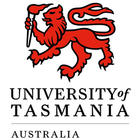International First Year Diploma Science
- Posted by University of Tasmania (UTAS)
- Home
- Courses
- University of Tasmania (UTAS)
- International First Year Diploma Science
International First Year Diploma Science
This course is delivered by the University of Tasmania International Pathway College. Powered by UP Education, the University of Tasmania International Pathway College provides a range of bridging programs for you to successfully study your chosen degree at the University of Tasmania. The International First Year Diploma – Science program…
Categories
COURSE DESCRIPTION
This course is delivered by the University of Tasmania International Pathway College.
Powered by UP Education, the University of Tasmania International Pathway College provides a range of bridging programs for you to successfully study your chosen degree at the University of Tasmania.
The International First Year Diploma – Science program has been developed to meet the needs of students who are academically capable of undertaking undergraduate study at university but require extra Academic English language support in their first year.
Students will also benefit from a targeted introduction to academic, cultural, social and practical aspects of study at the University of Tasmania which may differ from the diverse international backgrounds they come from.
Successful completion of the program allows for direct entry into the second year of an undergraduate degree.
Students study eight units at first year undergraduate level (four units each semester over two semesters). Units replicate the content, delivery and assessment of equivalent degree units at the University of Tasmania, along with specialised English language and academic support.
Learning Outcomes
1 Explain foundational theories, concepts, principles, models, and processes relating to relevant sciences.
2 Develop solutions, make interpretations and recommendations relating to routine and relevant science problems.
3 Analyse information and ideas in general academic and specific disciplinary contexts.
4 Communicate ideas and findings to specialist and non-specialist audiences, in written and oral formats using appropriate conventions.
Course structure
All students enrolled in the IFYD Science will complete four core units:
XPD124 – Programming Fundamentals
XPD129 – Data Handling and Statistics 1
XPD151 – Introduction to University Mathematics
XPD150 – English for Academic Purposes
Students intending to progress to a Bachelor of Science (approved major) will complete the following four Science stream units:
XPD122 – Global Geographies of Change
XPD131 – Ecology
XPD132 – Cell Biology, Genetics and Evolution
XPD133 – Chemistry 1A
Students intending to progress to a Bachelor of Information and Communication Technology (any major) will complete the following four Information and Communication Technology stream units:
XPD109 – Introduction to Management
XPD113 – Data Networks and Security
XPD119 – Database Fundamentals
XPD126 – Programming
REQUIREMENTS
Students must meet the existing stated academic entry requirements set by UTAS Admissions and have an IELTS of 5.5 (with no band less than 5.5) or equivalent.
XPD127 requires Year 12 Maths or equivalent.
EDUCATIONAL INSTITUTION
The University of Tasmania was officially founded on 1st January 1890 and is located at Sandy Bay, Tasmania. In addition to the main campus at Sandy Bay, it also operates out of the Newnham Campus and the Cradle Coast Campus. The most popular courses offered are the environmental studies that include wilderness management, marine sciences and indigenous studies in Tasmanian literature. Other unconventional courses include agriculture development, studies on the community and population and ocean study programs. The university also comprises of a Music Conservatorium, Art school and a School of Clinical studies.
The University of Tasmania was officially founded on 1st January 1890 and is located at Sandy Bay, Tasmania. In addition to the main campus at Sandy Bay, it also operates out of the Newnham Campus and the Cradle Coast Campus. The most popular courses offered are the environmental studies that include wilderness management, marine sciences and indigenous studies in Tasmanian literature. Other unconventional courses include agriculture development, studies on the community and population and ocean study programs. The university also comprises of a Music Conservatorium, Art school and a School of Clinical studies.




